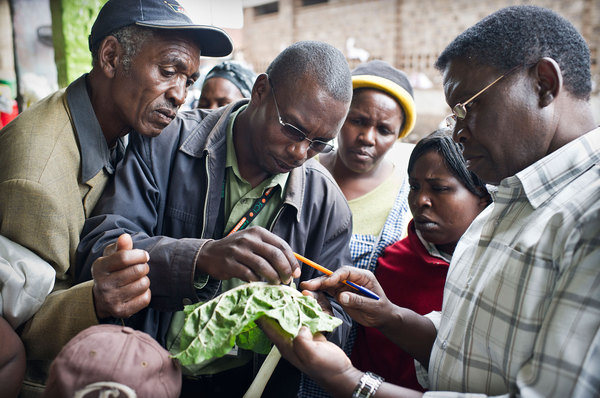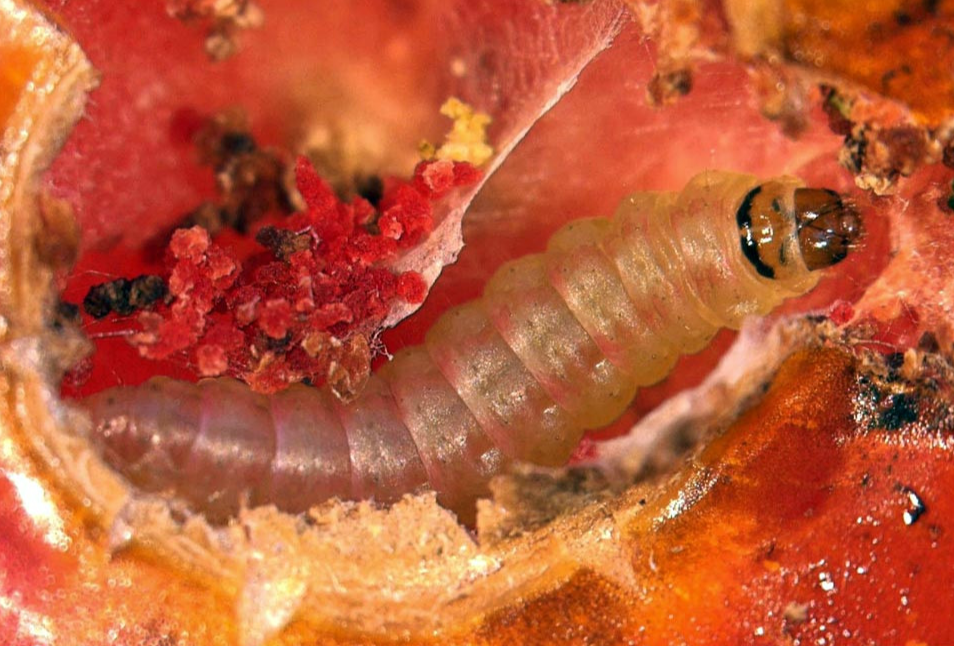Factsheet of the month: February 2016 – Rotation against purple seed stain in soya
At the beginning of January, a new research centre opened in Benin, which aims to boost productivity and incomes of smallholder farmers, and create job opportunities. Researchers based at the Green Innovation Center, which has been funded by the Federal German Ministry for Economic Cooperation and Development (BMZ), will develop tools for training and improve frameworks…
Factsheet of the month: January 2016 – Blast in Paddy
Scientists from the University of Delaware, USA, have recently uncovered critical information about the effect that deadly rice blast fungus has on rice plants, which could lead to more effective effective control measures in the fight against this disease. The team found that Magnaporthe grisea, the fungus responsible for rice blast, causes an increase in…
Factsheet of the month: November 2015 – Using natural nematicide plants against banana nematodes
Researchers at Queen’s University, Belfast, have developed a new method to control the parasitic nematodes that devastate banana crops and cause billions of dollars of crop losses annually. It is hoped that this new technology will reduce these losses, boosting the incomes of subsistence farmers in developing countries. Nematodes are notoriously difficult to control, and…
Factsheet of the month: October 2015 – Grain storage in metal silos against insect pests
Last week, 193 Member States of the United Nations adopted the new Sustainable Development Agenda to end poverty by 2030. This came at the beginning of a three-day Summit on Sustainable Development during which focussed on implanting changes that will see the Agenda achieve its ambitious aims. The Agenda, consisting of 17 Sustainable Development Goals…
Pest management advice in person, in print, on mobile…what next?
If you take a look at a Plantwise pest management decision guide (PMDG) on the Knowledge Bank, it probably won’t look much different to how it looked before. However, under the covers, this PDF has been created in a completely different way to before. This is because we are now storing each part of the PMDG…
Factsheet of the month: September 2015 – Control of Black Rot in Cabbage
Black rot is considered the most important disease of crucifers across the world and can attack its host at any stage of growth. Cauliflower and cabbage are the most readily affected crucifer hosts and suffer significant yield loss as a result of the disease. On cabbage, black rot causes yellow to brown V-shaped lesions to…
Factsheet of the month: August 2015 – Sprays against Tuta tomato leaf miner
In recent years, Tuta absoluta has gained a reputation for being one of the most destructive pests of tomato and can cause losses of 80-100% in the field if left unmanaged. Tanzania are feeling the effects of the yield reduction with a 375% increase in the cost of tomatoes in the past 6 months. A carton of…
Factsheet of the month: July 2015 – Prevention of powdery mildew on mango using cultural methods
The use of pesticides in Ethiopia has been increasing in recent years but it is thought that due to a lack of training and awareness, these chemicals are often being used unsafely and excessively. Many groups in Ethiopia are therefore raising awareness of Integrated Pest Management (IPM) in which control methods are selected based on…
Factsheet of the month: June 2015 – Conservation of natural enemies
Friday May 22nd was 2015’s International Day for Biological Diversity. This year’s theme was ‘Biodiversity for Sustainable Development’ which reflected the importance of biodiversity in achieving the Sustainable Development Goals. Biodiversity is key in agriculture and it both promotes and is promoted by sustainable methods. Farmers rely on a range of different species for the success of their…
Factsheet of the month: May 2015 – Tolerant bean varieties against stem maggots
The saying “prevention is better than cure” is no more true than when applied to agriculture. Taking precautionary measures against common pests can increase farmer income by investing a small amount of money into minimising crop losses, ensuring a high yield. Preventative measures can include correct land preparation, physical barriers, field hygiene and cultivation of tolerant…


